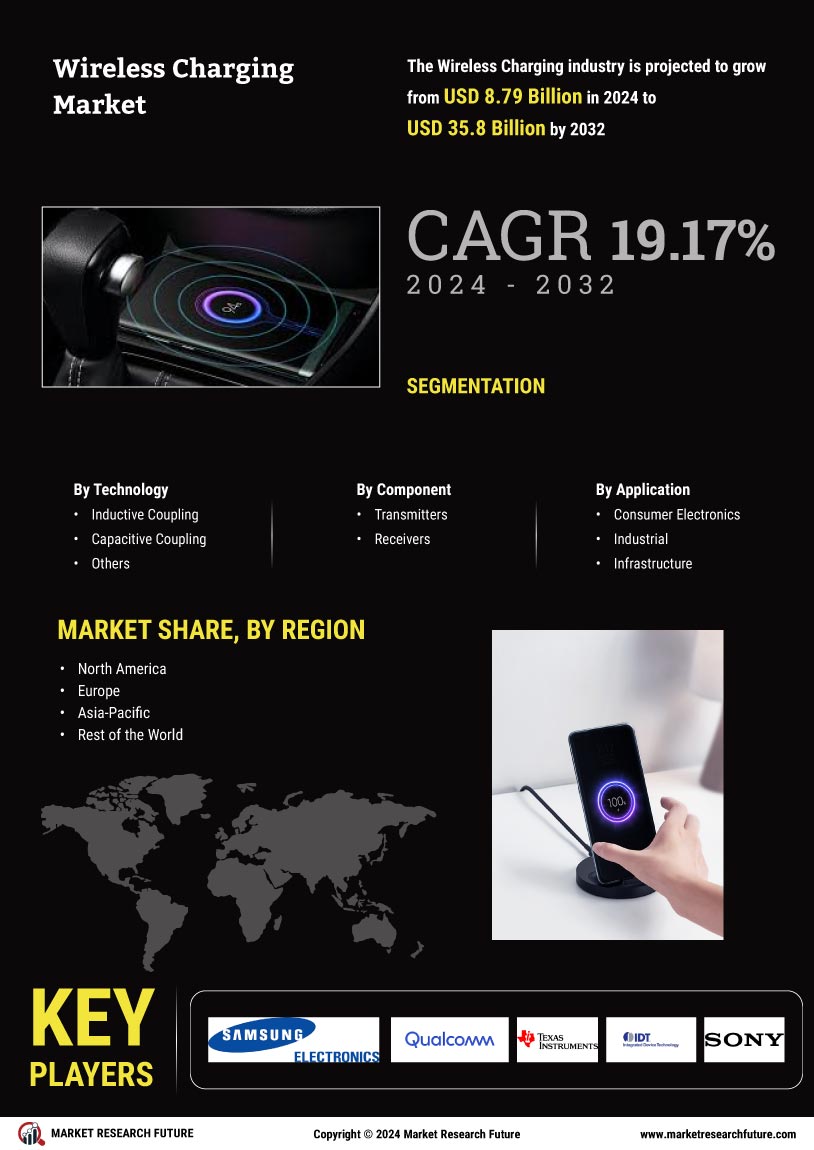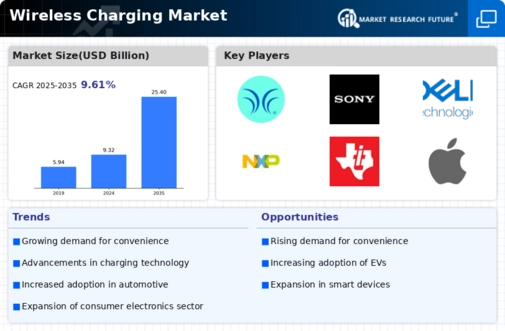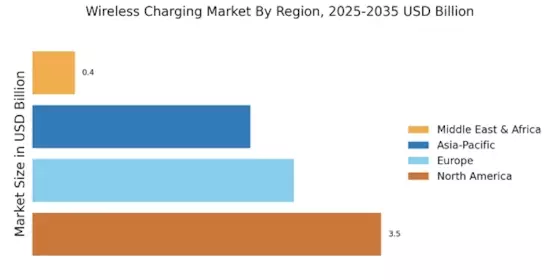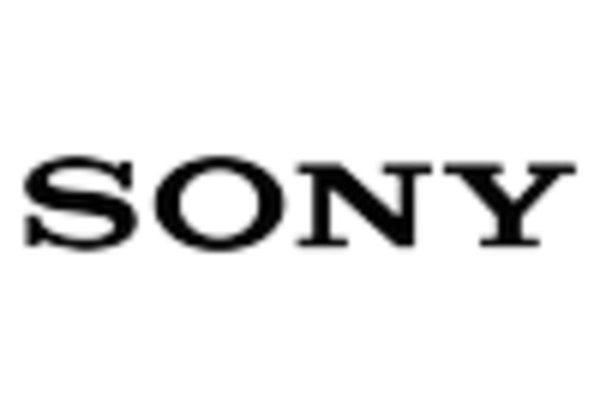Rising Demand for Convenience
The Wireless Charging Market experiences a notable surge in demand driven by the increasing consumer preference for convenience. As lifestyles become more fast-paced, the need for hassle-free charging solutions grows. Wireless charging eliminates the need for cables, allowing users to simply place their devices on a charging pad. This ease of use is particularly appealing in environments such as offices and homes, where multiple devices require charging. According to recent data, the wireless charging segment is projected to grow at a compound annual growth rate of over 20% in the coming years. This trend indicates a shift in consumer behavior towards adopting technologies that enhance daily convenience, thereby propelling the Wireless Charging Market forward.
Growing Focus on Consumer Electronics
The Wireless Charging Market is significantly influenced by the expanding consumer electronics sector. As smartphones, tablets, and wearables become ubiquitous, the demand for wireless charging solutions continues to rise. Manufacturers are increasingly incorporating wireless charging capabilities into their devices, recognizing the consumer preference for seamless charging experiences. Recent statistics indicate that nearly 50% of new smartphones launched in 2025 feature wireless charging technology. This trend not only enhances the appeal of consumer electronics but also drives competition among manufacturers to innovate and improve their offerings. Consequently, the Wireless Charging Market is poised for robust growth as more consumers seek devices that align with their lifestyle preferences.
Increased Adoption of Electric Vehicles
The Wireless Charging Market is witnessing a transformative shift due to the rising adoption of electric vehicles (EVs). As the automotive sector increasingly embraces electrification, the demand for efficient and convenient charging solutions escalates. Wireless charging technology offers a promising alternative to traditional charging methods, allowing EV owners to charge their vehicles without the need for physical connectors. This innovation is particularly appealing for urban environments where space is limited. Market analysts project that the integration of wireless charging systems in EV infrastructure could lead to a substantial increase in market size, with estimates suggesting a potential growth rate of over 30% in the next five years. This trend underscores the Wireless Charging Market's potential to revolutionize the transportation sector.
Sustainability and Environmental Considerations
The Wireless Charging Market is increasingly shaped by the growing emphasis on sustainability and environmental responsibility. As consumers become more aware of their ecological footprint, there is a rising demand for charging solutions that minimize waste and energy consumption. Wireless charging technology, particularly when integrated with renewable energy sources, presents an opportunity to reduce reliance on traditional power sources. Furthermore, the potential for wireless charging to eliminate the need for disposable charging cables aligns with the broader trend towards sustainable consumer practices. Market Research Future suggest that companies focusing on eco-friendly wireless charging solutions may capture a significant share of the market, as consumers prioritize sustainability in their purchasing decisions. This shift indicates a promising future for the Wireless Charging Market.
Technological Advancements in Charging Solutions
Technological innovations play a pivotal role in shaping the Wireless Charging Market. Recent advancements in charging efficiency and speed have made wireless solutions more attractive to consumers. For instance, the introduction of resonant inductive charging technology allows for greater distances between the charger and the device, enhancing user experience. Furthermore, the development of faster charging capabilities has addressed previous concerns regarding charging times. Market data suggests that the efficiency of wireless charging systems has improved significantly, with some systems now achieving charging speeds comparable to traditional wired chargers. This evolution in technology not only boosts consumer confidence but also encourages wider adoption, thus driving growth in the Wireless Charging Market.

















Leave a Comment